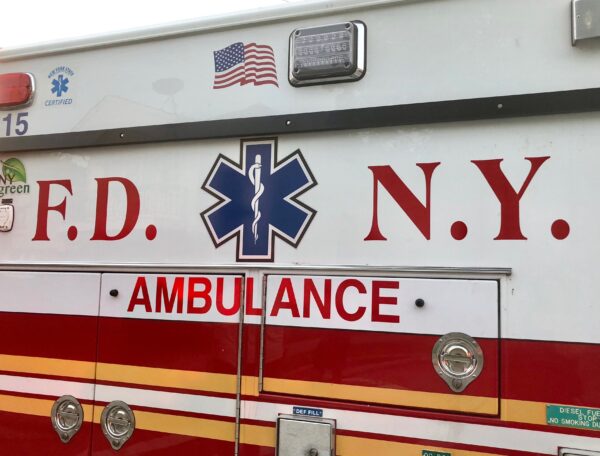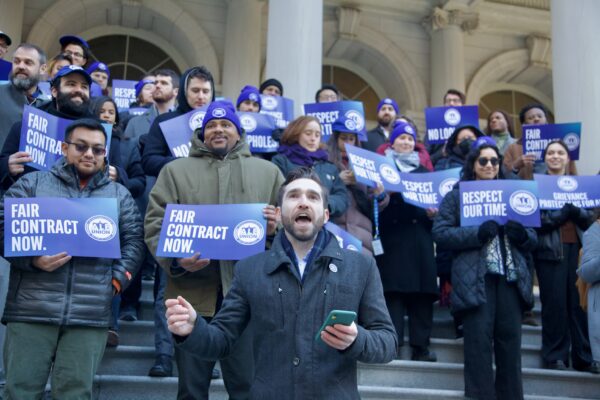September 23, 2013
By Marc Bussanich
New York, NY—The Northeast Corridor runs for 457 miles between Boston and Washington, D.C. On the south end between New York and DC there are sections of the corridor that run a straight path for 25 miles or more and on the north end trains have to traverse over movable bridges. Sam Caliciotti is a locomotive engineer by training and has operated Amtrak’s Acela Express, North America’s fastest high speed train, since its introduction in 2000. Watch Videos
At Amtrak’s offices in Midtown Manhattan, Caliciotti explained some of the skills a locomotive engineer has to master before they can operate trains at high speeds. Before getting behind the controls of an Acela Express, an engineer learns the basics–train handling, air brakes, operations and all the physical characteristics of the corridor such as every curve, bridge, restrictions and nook and cranny.
“When the Acela’s first arrived, we received classroom training for one week and then were evaluated for two complete round trips before we could steer the train on the corridor,” said Caliciotti.
The Acela Express can reach top speeds of up to 150 mph along the corridor but in some places it has to slow speeds dramatically to negotiate sharp turns and pass through tunnels built in the 19th century and not equipped to accommodate high speeds trains like the Baltimore and Potomac Tunnel.
To steer a high-speed train that travels with a lot of stop and starts requires a locomotive engineer who can multi-task between looking down the track, reading information on monitors and manipulating controls and gadgets.
“There’s multiple tasks going on constantly and engineer candidates learn during the on the job training portion how to execute tasks simultaneously and then we have to monitor them by riding with them often to evaluate their progress,” Caliciotti said.
Standing in front of a simulator, Caliciotti points out some of the gadgets an engineer uses to stop and start a high speed train. The Northeast Corridor is the longest electrified rail corridor in the country and the trains that run on them feature regenerative braking that feeds power back into the overhead electrical lines that power the trains.
“When our electric trains slow down the retardation power is turned into electric and goes back into the wires. So it has a green effect by feeding the grid which is pretty cool,” said Caliciotti.
In its 42 year history Amtrak has battled against strong political headwinds to stay in operation. But as ridership is breaking records, the utility of railroad travel is catching hold. Especially during inclement weather when airlines cancel or delay flights, Amtrak trains are still rolling. Caliciotti noted that Amtrak played a critical role after the terrorist attacks of 9/11.
“A lot of times trains are running on the NEC when airports shut down. We’ve cross-honored airline passengers to make sure they get to points in the Northeast. Shortly after 9/11, we were the only thing bringing hospital supplies into the New York area. So when things are shut down, Amtrak always seems to be running.”
Those strong political headwinds are still prevalent even though Amtrak is carrying more passengers around the country than at any time in its history. For example, Amtrak carried 2.9 million passengers in July, the highest number of passengers it has transported in one month.
But Congress appropriates only yearly funding and refuses to allocate multi-year funding, making it extremely difficult for Amtrak’s engineers and transportation officials to plan out five to 10 years.
Amtrak wants to upgrade and build-out new infrastructure in the Northeast to keep the momentum going and eventually be able to run trains at 220 mph but needs about $151 billion to make the repairs.
Cliff Cole, Amtrak’s senior communications officer, said trying to plan out more than one year at a time with only annual appropriations is a challenge. Asked if Amtrak is frustrated by Congressional inaction to provide multi-year funding, which Congress appropriates for the nation’s highway interstate and airport networks, Cole said there must be recognition that more people are using Amtrak.
“It’s a consistent struggle for our engineering and transportation people because they don’t have the funding mechanisms beyond one year. That’s the key thing. If we are able to get the funding to start planning things five years, 10 years down the road that would assist us in making the improvements we think we need along the corridor to take it to the next step, to get the trains one day at top speeds of 220 miles per hour,” Cole said.
While Congress has yet to renew the Passenger Rail Investment and Improvement Act of 2008, legislation which charted a new course for passenger rail by creating two national programs for the development of high-speed and intercity passenger rail in the U.S. but expires at the end of the month, Cole said he and his colleagues will just keep hammering away to keep America’s national railroad rolling.
“We recognize this is a challenge we’ve been going through since we started. But we’ll just keep at it.”
Follow Marc Bussanich on Twitter marc@laborpress.org



